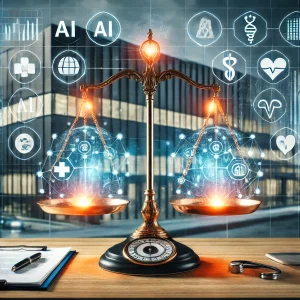
Why Do Some People Effortlessly Inspire Others While Others Struggle to Get Buy-In?
Some leaders walk into a room and instantly command attention, not because of their title, but because of their ability to inspire, influence, and align people to a shared vision. Others, despite their best efforts, find themselves battling resistance, scepticism, or indifference.
The difference? Influence, not authority.
If you’ve ever struggled to get people on board with your ideas, especially when you lack direct authority, this article is for you. Because leadership isn’t about forcing compliance; it’s about inspiring commitment.
So, how do you get people to align with your goals when they push back? How do you drive action when you have no power to enforce it?
Let’s break it down.
Misalignment: A Silent Killer of Progress
When teams aren’t aligned, everything slows down. Competing priorities, unclear objectives, and lack of buy-in lead to:
- Missed deadlines – Projects get delayed because people aren’t fully committed.
- Lack of accountability – People disengage when they don’t feel invested.
- Internal resistance – You spend more time fighting friction than making progress.
- Wasted effort – Instead of rowing in the same direction, everyone pulls in different ways.
Misalignment is one of the biggest roadblocks to success, yet most people focus on the symptoms (missed deadlines, poor execution) instead of the cause (lack of shared commitment).
The good news is that alignment doesn’t require authority, just the right approach.
10 Proven Strategies to Gain Buy-In and Drive Alignment
1. Understand Before You Persuade
Most people jump straight to convincing, but influence starts with understanding.
Before pushing your agenda, ask:
- What matters most to them?
- What challenges or fears do they have?
- What would make them care about this goal?
When people feel heard, they become open to listening.
2. Sell the Vision, Not Just the Task
People don’t commit to tasks, they commit to meaningful missions.
You’re not just asking for effort. You’re inviting them into something bigger.
Instead of:
- “We need to complete this project by next quarter.”
Try:
- “If we execute this well, we’ll create something that changes how we work and opens new opportunities for all of us.”
Frame the vision in a way that makes them want to be part of it.
3. Create an Emotional Connection
Logic informs, but emotion moves people.
The most influential leaders know how to make people feel why something matters.
- Will this goal reduce stress and improve work-life balance?
- Will it create a legacy they can be proud of?
- Will it make their jobs easier, more impactful, or more fulfilling?
Find the emotional trigger that makes your goal personally relevant to them.
4. Identify and Leverage Key Influencers
People don’t just listen to leaders, they listen to peers they respect.
Who in your organisation has influence? Find those people, get them on board first, and let them help drive the message.
It’s one thing to hear a directive from you. It’s another to hear it from someone they trust.
5. Align Goals with What They Already Care About
The fastest way to gain buy-in is to show them what’s in it for them.
Instead of:
- “We need to change how we do things.”
Say:
- “This approach will make your job easier, eliminate repetitive work, and give you more time for the projects you enjoy.”
When people see alignment with their own interests, resistance decreases.
6. Give Them Ownership
People resist being told what to do, but embrace what they help create.
Involve them in shaping the plan. Ask for input. Let them feel a sense of ownership.
When they see their fingerprints on the solution, they become personally invested.
7. Use Social Proof and Momentum
Humans are wired to follow the crowd.
If people see others getting on board, they’ll be more likely to follow.
- Share examples of other teams making progress.
- Highlight success stories.
- Make early adopters visible.
Momentum creates its own energy, use it.
8. Adapt Your Communication Style to Your Audience
Different people respond to different approaches.
- Data-driven individuals need facts and logic.
- Visionaries need inspiration and big-picture thinking.
- Detail-oriented professionals need clarity and structure.
If your message isn’t resonating, change how you deliver it.
9. Stay Persistent, But Flexible
Influence is a long game.
If you face pushback, don’t take it personally, adjust your approach.
- Are you addressing the wrong pain points?
- Have you built enough trust first?
- Do you need to bring in a key supporter?
The most successful leaders aren’t the ones who force alignment, they’re the ones who earn it over time.
10. Reinforce Progress and Celebrate Small Wins
Nothing builds momentum like progress you can see.
- Call out small wins.
- Publicly recognise contributors.
- Show how their efforts are making a difference.
When people see the impact of their alignment, they become even more invested.
Influence is a Skill – Master It
The ability to align people to a vision, without authority, is one of the most valuable leadership skills you can develop.
The key takeaway?
If you can:
- Make them believe in the mission
- Show them why it matters
- Help them see themselves in it
…you won’t have to force alignment. It will happen naturally.









